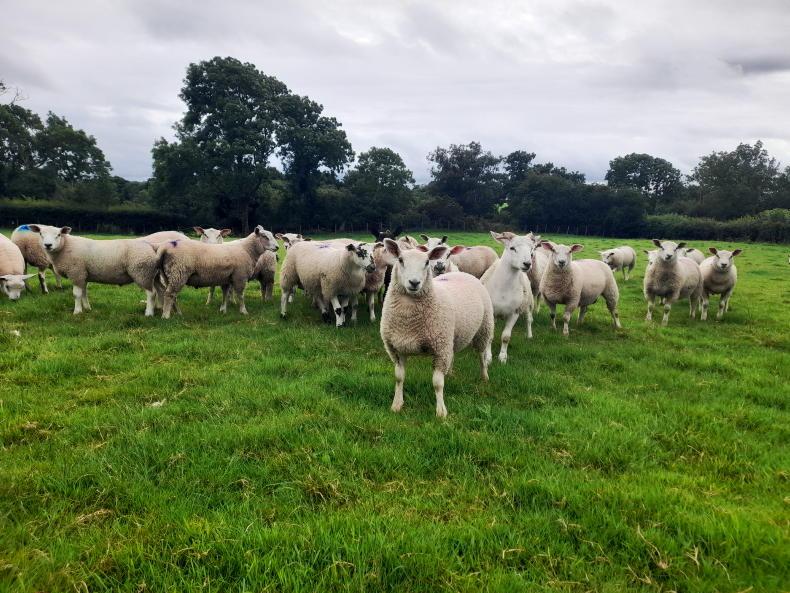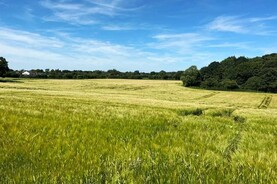Animal nutrition is a huge topic and if you account for all classes of livestock in NI, it is a multi-million-pound industry.
From sales of concentrate (including advice on the fine tailoring of feeding rates) through to machinery used to efficiently distribute this stuff, plus all the grassland related products, it really could be described as the heartbeat of local agriculture.
And yet, I sometimes think we spend too much time worrying about what is being put down an animal’s throat, and not enough on what is coming out the other end.
When I was rearing pullets, the consistency of what was expelled from their rear ends was a strong indicator of gut health, overall bird performance, and whether the feed was of high quality or not.
Watery droppings were a pointer that one of many possibilities needed to be looked at, whereas solid dung told me that I had nothing to worry about.
And I’m beginning to think that lambs are little different.
Apologies if you are currently tucking into a plate of food, but without putting too fine a point on it, the rear end of a lamb (or rather, what is fired out of it) is vitally important, especially during the early grazing months.
Clean and dry
Despite a near perfect season so far, I have had an ongoing problem trying to ensure that lambs are clean and dry around the tail area.
This year’s strategy was to dose everything regularly to control nematodirus, while also dosing any vulnerable lambs for coccidiosis. And to back up this policy, regular weighing was planned to ensure physical performance was on target.
This worked well with batches of strong lambs, and a couple of doses of a white drench kept already clean lambs nice and dry. But as always, it was those triplets, pets, and ewe lamb doubles that tortured me.
After some of the triplets had been dosed, they quickly started to scour again. “Perfect”, thought Derek, “They’re ready for a shot of something to control cocci.”
But when this didn’t dry them completely, I remembered reading something about nematodirus control sometimes being needed every 14 days. So, in I went again with another white drench and it dried them up. Therefore, I assumed a similar approach would work with the pets and ewe lamb pairs.
Pet lambs are a pain in the neck.
Because Susan reared them up to weaning and because she loves them as if she had given birth to them herself, we put them out to grass at the earliest possible opportunity.
With wall-to-wall sunshine (unusually for that time of year) she convinced me that they needed to go out to the field where they could express themselves and identify as true ovine creatures. Well, they expressed themselves alright, and between ad lib meal from the creep feeder and soft, lush grass, they gave impressive renditions of a garden hose.
So, over the next few weeks, they were dosed for stomach worms and coccidiosis. When this didn’t completely cure the wet tails, a wee shot of antibiotic was administered.
By and large, this worked well, although at some point you have to admit that the digestive system of certain artificially reared lambs is just a thing of mystery.
Eventually the vast majority of lambs were dry below the tail, and the weighbridge told me that the first draw of (single) March-born lambs were slaughter-fit by the middle of May.
Under control
It seemed as if everything was under control; I congratulated myself on managing the situation pretty well. And then we weaned them.
The first 100 doubles from a field at home were taken to silage aftergrass which had received a mere 30 units of nitrogen.
It was lovely stuff, the weather was perfect, and they looked fantastic – for all of about ten days.
Then, surprise surprise, they began to scour with all that yummy material they had gorged on.
To say this was a bit annoying was the understatement of the century – dirty-tailed lambs are unpleasant to look at, disagreeable to handle, they clabber your legs with green staining, and by the time they’re returned to the field they have smeared each other with green stripes.
They dried up (and therefore got cleaner) as the days passed, so I assume it was just the transition from weaning and being moved onto soft grass.
But still, given the fantastic weather all year, combined with a robust dosing strategy, I thought I had nailed my lamb management, and this was surely going to be the best result ever. It seems not.






 This is a subscriber-only article
This is a subscriber-only article










SHARING OPTIONS: